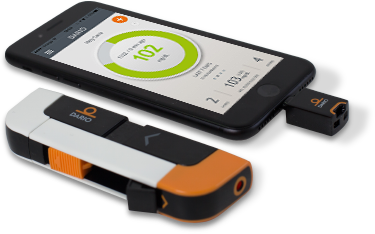The astounding pace of mHealth innovation in diabetes management
With smartphones and mobile apps, people living with diabetes now have unprecedented access to blood glucose readings and health information.


Popular articles
The pace of digital health innovation around solutions for diabetes management has been astounding. With the growing using of smartphones and mobile apps, people living with diabetes have better access to blood glucose readings and general health information than ever before.
Considering the nature of diabetes, this rapid progress makes sense. Because patients have to regularly monitor their blood glucose level, diabetes is in a sense a truly technologically dependent condition.
It helps that investment in innovation for diabetes management is substantial and growing. Just this year Fitbit invested $6 Million in a startup working on continuous glucose monitoring, while diabetes management company Intuity Medical brought in $40 million in equity financing. That’s not to mention new and ongoing innovation prizes like Ascensia’s Diabetes Challenge and the T1D Exchange Diabetes Innovation Challenge.
The result is that life is getting easier for the over 100 million Americans with diabetes or prediabetes.
The crux of diabetes management is monitoring glucose. To stay in good health, people with diabetes regularly test and monitor their blood sugar to make sure it’s within a safe range.
Traditionally, this is done multiple times a day by taking a finger stick sample and testing it with a blood glucose meter. But that's changing with new technology, and it's happening fast.
Here are three types of mobile health innovations that are making glucose monitoring easier for people living with diabetes.
1. The traditional mHealth approach

The Dario Blood Glucose Monitoring System is the original, all-in-one smart glucose meter. It syncs with the Dario Smart Diabetes Management app to measure, record and track blood glucose levels. In addition, the app records carbs intake, insulin medication and physical activity.
DarioHealth recently made news when the FDA cleared a version of the monitor that’s compatible with iPhone 7, 8 and X. Though self-described as a “sleek, pocket-sized all-in-one smart glucose meter,” Dario’s device takes the traditional mHealth approach: a connected monitor that syncs with the patients smartphone to record, track and share information.
2. Continuous glucose monitoring

The focus of the latest innovations is continuous glucose monitoring. CGM is just what it sounds like – a way to monitor glucose levels continuously throughout the day. Last September, the FDA approved Abbott’s Freestyle Libre Flash, the first CGM that that doesn’t require blood sample calibration.
The Libre reduces the need for finger stick testing by using a small wire inserted below the skin’s surface that continuously monitors glucose levels. Previous models made by Dexcom and Medtronic also monitor glucose continuously, but require 2-4 finger sticks a day for calibration.
When it comes to mobile solutions for diabetes management, CGM is an exciting addition that’s just going mainstream.
3. What's on the horizon?

For years there was talk of Novartis and Google developing a smart contact lens that would measure glucose levels in tears. Originally predicted to be on the market by 2020, a recent announcement declared the project ”technically infeasible.” Still, a team in South Korea has renewed interest in glucose-monitoring contact lenses after publishing new research this year.
But if UC San Diego researchers are on to something, there may be an even cooler option coming. A lab just launched a pilot clinical trial for a low-cost, single-use tattoo-like wearable that measures the user’s glucose levels.
“The main purpose of our research is to develop new technologies that can monitor glucose without drawing blood and ideally measure it over the course of the day,” project codirector Patrick Mercier told MobiHealthNews last month.
Noninvasive blood glucose monitoring is a long-standing focus for the world of digital health. Whether it arrives as a contact lens, tattoo-sensor or something else, the next breakthrough is coming.http://45.33.12.216/blog/2018/01/5-unusual-digital-health-innovations-ces-2018/
Related Articles


We Get Doctors Home on Time.
Contact us
We proudly offer enterprise-ready solutions for large clinical practices and hospitals.
Whether you’re looking for a universal dictation platform or want to improve the documentation efficiency of your workforce, we’re here to help.





